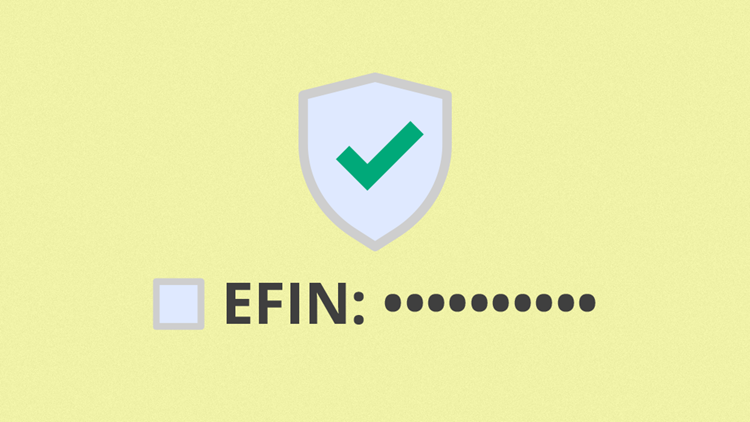by | Dec 18, 2021 | Tax Tips and News
Drake Software, LLC (“Drake”) is aware of the recently disclosed Apache Log4j Remote Code Execution Vulnerability, and has taken the following steps to ensure the continued protection of its operations and customers.
Actions
Upon receiving cybersecurity threat intelligence reports last week regarding this vulnerability, Drake’s Operations and Cybersecurity teams began investigating potential impacts to our systems, products, and services and implementing proactive risk mitigations. The following are examples of some of the actions taken:
- Information about the Apache Log4j vulnerability was collected from sources such as the Cybersecurity & Infrastructure Security Agency, Apache Software Foundation, and crowdsourced data collected on Github
- Potential use of Log4j in Drake’s software products was assessed
- Drake network perimeter defenses were tuned to explicitly identify and block log4j exploit attempts
- Potential exposures in third-party software, systems, and services were investigated
- Drake’s security event tracking and alerting system was configured to alert on log4j exploit attempts and indicators of system compromise
- Daily security vulnerability scans were configured to hunt for vulnerable systems within Drake’s networks
- A third-party cybersecurity consulting team was brought in to perform external security testing
Results of Analysis
- Products
- Drake’s products are not directly susceptible to the Log4j vulnerability. Drake does not incorporate Log4j code into the software it develops, nor does it use log4j for logging functions in online products.
- Administrative Infrastructure
- Some third-party software products used in Drake’s internal operations were identified as having potential exposures. These systems were, and continue to be, isolated from Internet exposure, and have been scheduled for patching as vendors release their fixes. Drake has found no indication of system compromise associated with the Log4J vulnerabilities in Drake’s environment.
- Third-party Service Providers
- Drake has found no indication that third-party services, relied upon by Drake, have had a compromise associated with the Log4J vulnerabilities.
Ongoing Vigilance
Drake expects this issue to evolve over time, and will continue to actively monitor internal operations and third-party software, system, and service provider advisories, as well as apply additional recommended mitigations as necessary.
– Story provided by TaxingSubjects.com
by | Dec 17, 2021 | Tax Tips and News
The Internal Revenue Service is moving quickly to do its part in relief efforts targeting tornado victims in Kentucky.
Around December 10, Kentucky residents were hit by a trifecta of terror: tornadoes, severe thunderstorms and flooding. Many small communities were nearly wiped off the map; unfortunately, casualties are still being counted.
The IRS says taxpayers in the affected areas now have until May 16, 2022, to file various tax returns and make tax payments. The extended deadline applies to all taxpayers within the current federal disaster area as declared by the Federal Emergency Management Agency (FEMA), which presently covers Caldwell, Fulton, Graves, Hopkins, Marshall, Muhlenberg, Taylor, and Warren counties.
The IRS says additional counties, once they are included in the disaster declaration by FEMA, will automatically be added to the tax relief package—even if those locations are in neighboring states.
What does the tax relief do?
This tax relief package postpones various deadlines for filing and paying taxes that would have been due starting on December 10. Qualified taxpayers, both individual and business, now have until May 16 to file their returns and pay any taxes that were originally due during the December 10-to-May 16 time frame.
Since 2021 individual income tax returns are ordinarily due April 18 next tax season, the IRS relief package pushes that deadline back to May 16 for the Kentucky storm victims. This would include business return filers who would otherwise have 2021 returns due on March 15 and April 18.
Here are some other provisions of the Kentucky relief package:
- Farmers who choose to skip making estimated tax payments and who usually file their returns by March 1 have until the May 16 deadline to file their 2021 return and pay any tax due;
- Taxpayers in the disaster area have until May 16 to make their 2021 IRA contributions;
- Taxpayers making estimated tax payments can skip their fourth-quarter tax payment normally due on Jan. 8, 2022, and simply include that payment with the 2021 return when they file on May 16;
- Businesses’ quarterly payroll and excise tax returns due January 31 and May 2 now also have a May 16 due date;
- If taxpayers receive penalty notices on payroll and excise tax deposits normally due between December 10 and December 27, those penalties will be abated by the IRS – as long as the deposits are made by December 27.
For more information on a wide variety of returns, payments and other tax-related actions that qualify for the extended deadline, visit the IRS website’s disaster relief page. It’s also the source for the most up-to-date list of counties and states included in the FEMA disaster declaration.
There’s no action needed from taxpayers
The provisions of the IRS relief package are automatic; that is, taxpayers do not have to contact the IRS to either register for relief or to make sure they qualify. IRS systems automatically make that determination, based on the taxpayer’s address of record on file with the agency.
Taxpayers in the disaster area should remember, however, if they get a late-filing or late-payment notice from the IRS with a filing, payment or deposit due date that falls within the December 10—May 16 postponement time frame, they should contact the IRS at the number printed on the notice to have the penalty abated.
Those taxpayers claiming a loss on their taxes from the tornadoes and other storms in the disaster area have two ways to make a claim of uninsured or unreimbursed losses.
Taxpayers can either claim the storm losses in the year that they occurred—meaning 2021 return now due from storm victims by May 16—or they can claim the loss on the return for the prior year, which would be 2020 in this case.
No matter which method taxpayers choose, they should write the FEMA declaration number 4630DR on any return claiming a loss. Publication 547 has details on claiming a disaster-related loss.
For more information on the federal government’s coordinated response to these storms and disaster recovery, visit DisasterAssistance.gov.
Source: IR-2021-248
– Story provided by TaxingSubjects.com
by | Dec 15, 2021 | Tax Tips and News
The IRS, the Independent Sector, and the National Council of Nonprofits are this week reminding non-itemizers that charitable contributions made this year may qualify for a tax deduction. This temporary rule comes from a provision in the Coronavirus Aid, Relief, and Economic Security (CARES) Act that was designed to help cash-strapped nonprofits during the pandemic.
Since an estimated 90 percent of taxpayers take the standard deduction, many could benefit taxpayers and charities stand to benefit. However, the December 31, 2021 deadline for making a cash contribution to a qualifying charity is fast approaching. So, let’s take a look at what the IRS had to say about deducting tax year 2021 charitable contributions.

How much in charitable donations can taxpayers deduct if they take the standard deduction?
The amount of tax year 2021 cash contributions to qualifying charities that taxpayers taking the standard deduction can claim depends on their filing status:
- $300 for individuals
- $600 for married couples filing jointly
While described as “cash,” the IRS points out that qualifying contributions can actually “include those made by check, credit card, or debit card, as well as amounts incurred by an individual for unreimbursed out-of-pocket expenses in connection with their volunteer service to a qualifying charitable organization.” However, agency’s definition doesn’t cover “the value of volunteer services, securities, household items, or other property.”
Keeping that in mind, the agency notes that this temporary deduction has “special recordkeeping rules,” including:
- Obtaining an acknowledgement letter from the charity before filing a return
- Retaining a cancelled check or credit card receipt for contributions of cash
To help taxpayers meet the recordkeeping requirements, the IRS included a link to Publication 526, Charitable Contributions.
How can I find a qualifying charity?
The IRS notes that their Tax Exempt Organization Search tool can help taxpayers find charities that qualify for a tax-deductible donations. The online resource lists numerous databases that users can search, including:
The page also includes several accordion menus that can contain useful information.
Source: IR-2021-247
– Story provided by TaxingSubjects.com
by | Dec 14, 2021 | Tax Tips and News
The Internal Revenue Service has updated its online information with the aim of helping individual taxpayers qualify for Economic Impact Payments (EIPs) if they didn’t already get one.
The agency says it has updated its frequently asked questions (FAQs) on the 2020 Recovery Rebate Credit, which is available for taxpayers who didn’t receive the full amounts in the first two rounds of the Economic Impact Payments.
The first and second rounds of EIPs—sent out in 2020 and early 2021—were advance payments of the Recovery Rebate Credit, claimed on a 2020 tax return.
Taxpayers who missed out on the first or second stimulus payment need to look over the new updated FAQs and see if the new information helps them determine their eligibility and if they need to claim the Recovery Rebate Credit for the 2020 tax year.
If the answer is yes, the taxpayer can either file a 2020 return if they have not filed yet; or they can file an amended return if they’ve already had a 2020 return filed and processed.
A word about reliance and FAQs
The IRS also makes a point to tell taxpayers not to rely too heavily on frequently asked questions when it comes to formal IRS actions such as Tax Court. Instead, the agency advises, FAQs are there to help taxpayers with general information—rather than case-by-case guidance. That, they say, should be found in the Internal Revenue Bulletin.
The Bulletin is the go-to source where official rulings and procedures of the IRS are announced. It also carries Department of the Treasury decisions, executive orders, tax conventions, legislation, and other tax items of interest.
Frequently asked questions, on the other hand, are a valuable resource because they can get things like tax changes before the public quickly.
The IRS recognizes this can put taxpayers in the middle, so the agency has decided that a taxpayer who relied on guidance of an FAQ—and their reliance was based on facts—won’t be penalized where there’s a reasonable cause standard for relief. This includes a negligence penalty or some other penalty involving accuracy where there’s an underpayment of tax.
For more on reliance, or the Recovery Rebate Credit, visit IRS.gov.
Sources: IR-2021-246; “General Overview of Taxpayer Reliance on Guidance Published in the Internal Revenue Bulletin and FAQs“
– Story provided by TaxingSubjects.com
by | Dec 10, 2021 | Tax Tips and News
Tax professionals have been in the crosshairs of cybercriminals for some time now, and it’s only getting worse. Now, the crooks are casting their nets, not only for client data, but to snare vital data of the tax pros themselves.
The Internal Revenue Service says this newest group of targets include the tax professional’s Electronic Filing Identification Number, or EFIN.
This sets up a very scary scenario: If just one tax practitioner is compromised by a hacker or an identity thief, the effect is like tossing a rock into a pond. The initial impact may be thought to be small, but the resulting waves take in a lot of ground as they spread.
One tax office breach can lead to the theft of data for thousands of taxpayers.
Protect yourself from cybercriminals
One of the best ways to protect against illegal activity is actually very simple: Check your IRS e-Services account regularly, to see how many federal returns have been submitted using your EFIN. It’s a vital safeguard that shouldn’t be overlooked during tax season.
If the number of returns shown online doesn’t agree with the tax pro’s records—or if anything else seems suspicious—they should call the IRS e-help desk at 866-255-0654.
Tax pros who don’t already have an e-Services account can go online to e-Services on IRS.gov and register for one.
Beyond checking one’s EFIN, there are a number of “best practices” we should all be using to keep data secure. These include using strong anti-virus software, insisting on strong and unique passwords, and using two-factor authentication whenever possible.
But that’s not all:
- Learn to recognize and avoid phishing scams; do not open links or attachments from suspicious emails, most data thefts begin with a phishing email.
- Secure all devices with security software and let it automatically update.
- Use strong passwords of eight or more mixed characters; use phrases that are easily remembered, and password protect all wireless devices.
- Encrypt all sensitive files and emails and use strong password protections.
- Backup sensitive data to a safe and secure external source not connected fulltime to the network.
- Wipe clean or destroy old computer hard drives that contain sensitive data.
For more information on keeping EFINs secure, check out Publication 3112, IRS e-file Application and Participation; and Publication 1345, Handbook for Authorized IRS e-file Providers of Individual Income Tax Returns.
Source: Tax Tip 2021-182
– Story provided by TaxingSubjects.com
by | Dec 10, 2021 | Tax Tips and News
While most Americans have their eyes firmly on the Christmas holidays, many US retirees have another milestone to consider.
While the holidays are the emotional favorite, they shouldn’t let the deadline slip by to make Required Minimum Distributions (RMDs) from their retirement plans and individual retirement accounts. That deadline is December 31.
RMDs are generally the minimum amounts that plan owners have to take out in a year, starting in the year they reach 72. Owners have the alternative to start RMDs the year they retire, if that’s later than 72.
If the retirement plan account is an IRA – or the account owner is at least a 5% owner of the business that sponsors the retirement plan – the account owner has only one choice: to withdraw the RMD starting the year they turn 72.
Taxpayers who reached 70 1/2 in 2019 – that is, those who tuned 70 on or before June 30, 2019 – didn’t have to take a Required Minimum Distribution for 2020, but they will have to take one for 2021. (More on this later.)
Those who reach 72 this year with their 70th birthday on or after July 1, 2019, have their first RMD due by April 1 of 2022.
Who has to take an RMD?
The rules for Required Minimum Distributions apply to:
- Owners of traditional Individual Retirement Arrangements (IRAs)
- Owners of traditional Simplified Employee Pension (SEP) IRAs
- Owners of Savings Incentive Match Plans for Employees (SIMPLE) IRAs
- Participants in various workplace retirement plans, including 401(k), Roth 401(k), 403(b) and 457(b) plans
The biggest excepted group to RMDs are taxpayers who participate in Roth IRAs, since those investments don’t require distributions while the original owner is still alive.
How do retirees find their RMD?
An IRA trustee or the plan administrator will notify the taxpayer who owns the account that an RMD must be taken, when, and how much to withdraw. This is done for each IRA the taxpayer owns. In the case of IRAs, the taxpayer with multiple accounts can take the RMD amounts for all their accounts from just one, satisfying the law for distributions.
Rules, however, are different for workplace retirement plans, where RMDs have to be taken from each account the taxpayer owns.
The penalty for not taking the distribution – or for not taking enough in a distribution – can be a real attention-getter: a 50% excise tax on the amount not distributed.
The RMD is figured using the taxpayer’s life expectancy and the account’s balance. Many trustees use Form 5498, IRA Contribution Information, to report the distribution to the account owner.
Most times, life expectancy is calculated using the Uniform Lifetime Table III in Publication 590-B, Distributions from IRAs.
The IRS also has online worksheets taxpayers can use at IRS.gov.
The coronavirus and 2020 distributions
Like just about everything else in American life, the COVID pandemic affected Required Minimum Distributions in 2020.
If an IRA owner or a beneficiary got an RMD during 2020, they had the option of returning the funds to their IRA or other qualified plan to avoid paying taxes on the distribution.
If a 2020 distribution could be qualified as a coronavirus-related distribution, it could be repaid over a three-year period or have taxes on the RMD spread over three years.
A 2020 distribution from an inherited IRA, however, faced a different set of rules, since those withdrawals weren’t allowed to be repaid. Taxpayers could, however, have the taxes on the RMD spread over a three-year period.
For frequently asked questions, forms, instructions and other tools, visit IRS.gov online.
There, find:
Source: IR-2021-245
– Story provided by TaxingSubjects.com







